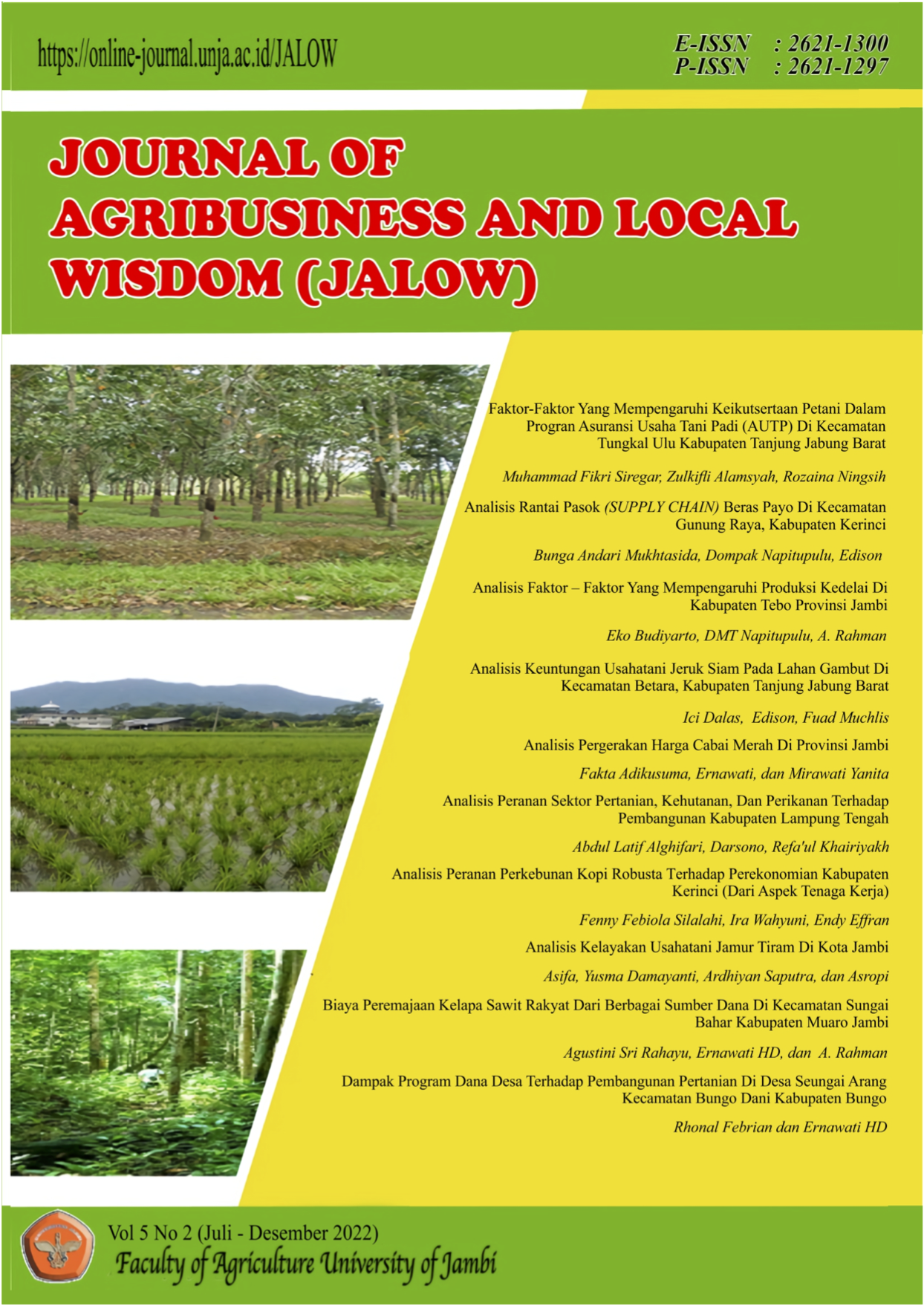Analisis Faktor – Faktor Yang Mempengaruhi Produksi Kedelai Di Kabupaten Tebo Provinsi Jambi Production Factors
DOI:
https://doi.org/10.22437/jalow.v5i2.23104Keywords:
Production Factors, Soybean Farming, Cobb DouglasAbstract
the center of soybean production in Jambi Province. Data was collected through filling out questionnaires with the survey method. A sample of 70 farmers was determined through stratified random sampling. The data were analyzed using multiple regression method, so the analysis used refers to the formulation of the research objectives. The production function model used is Cobb Douglas. The data obtained were analyzed and regressed to find out how much the independent variables (land area, number of seeds, NPK fertilizer, organic fertilizer, pesticides, rhizobium and labor) affected soybean production as the dependent variable. The average land area for soybean farming in the study area is 2.40 ha. The seeds used are certified superior seeds of the Anjasmoro variety with a planting age of 80-90 days. Based on the results of the study, the average use of production factors in soybean farming at the research location was the use of 43.98 kg/ha of seeds, 216.12 g/ha rhizobium, 54.91 kg/ha NPK, 2.75 l/ha organic fertilizers. ha, pesticides 2.10 liters/ha, labor 19.92 HOK/ha. The average production at the research site is 3.595 tons with an average productivity of 1.53 tons/ha. Soybean cultivation by farmers aims to benefit from the sale of crops. The cropping pattern used is a monoculture cropping pattern with a spacing of 50-60 cm. Based on the regression results of soybean farming in the research area, the use of production factors of land area, number of seeds, NPK fertilizer, rhizobium and pesticides are factors that affect soybean production in Tebo Regency. Meanwhile, organic fertilizer and labor have no effect on soybean farming production in Tebo Regency.
Downloads












